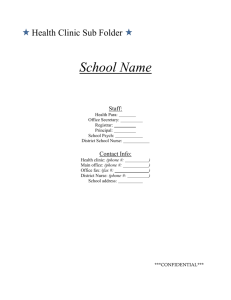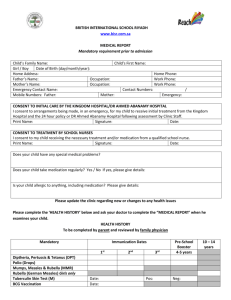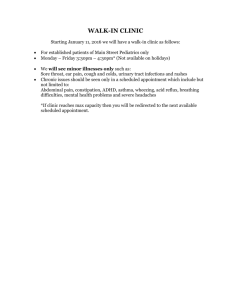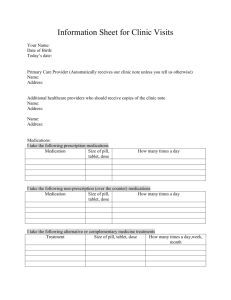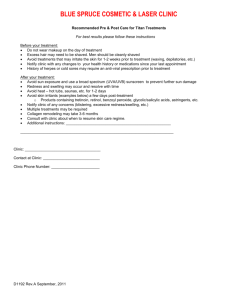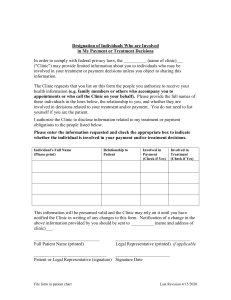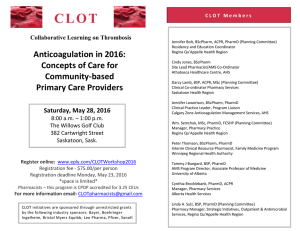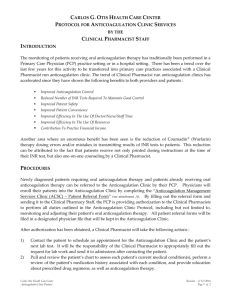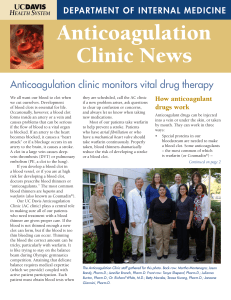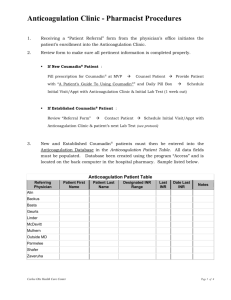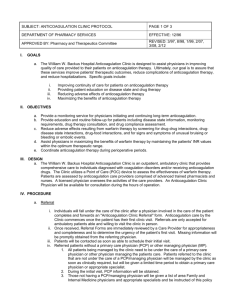Warfarin Management: Past, Present & Future
advertisement
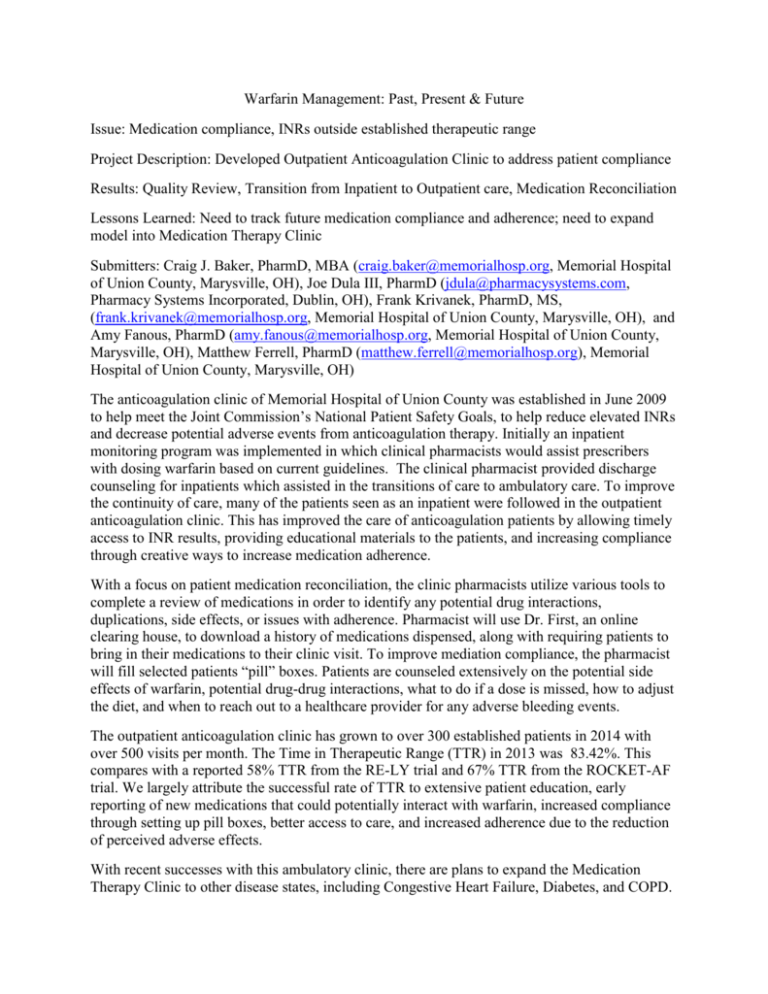
Warfarin Management: Past, Present & Future Issue: Medication compliance, INRs outside established therapeutic range Project Description: Developed Outpatient Anticoagulation Clinic to address patient compliance Results: Quality Review, Transition from Inpatient to Outpatient care, Medication Reconciliation Lessons Learned: Need to track future medication compliance and adherence; need to expand model into Medication Therapy Clinic Submitters: Craig J. Baker, PharmD, MBA (craig.baker@memorialhosp.org, Memorial Hospital of Union County, Marysville, OH), Joe Dula III, PharmD (jdula@pharmacysystems.com, Pharmacy Systems Incorporated, Dublin, OH), Frank Krivanek, PharmD, MS, (frank.krivanek@memorialhosp.org, Memorial Hospital of Union County, Marysville, OH), and Amy Fanous, PharmD (amy.fanous@memorialhosp.org, Memorial Hospital of Union County, Marysville, OH), Matthew Ferrell, PharmD (matthew.ferrell@memorialhosp.org), Memorial Hospital of Union County, Marysville, OH) The anticoagulation clinic of Memorial Hospital of Union County was established in June 2009 to help meet the Joint Commission’s National Patient Safety Goals, to help reduce elevated INRs and decrease potential adverse events from anticoagulation therapy. Initially an inpatient monitoring program was implemented in which clinical pharmacists would assist prescribers with dosing warfarin based on current guidelines. The clinical pharmacist provided discharge counseling for inpatients which assisted in the transitions of care to ambulatory care. To improve the continuity of care, many of the patients seen as an inpatient were followed in the outpatient anticoagulation clinic. This has improved the care of anticoagulation patients by allowing timely access to INR results, providing educational materials to the patients, and increasing compliance through creative ways to increase medication adherence. With a focus on patient medication reconciliation, the clinic pharmacists utilize various tools to complete a review of medications in order to identify any potential drug interactions, duplications, side effects, or issues with adherence. Pharmacist will use Dr. First, an online clearing house, to download a history of medications dispensed, along with requiring patients to bring in their medications to their clinic visit. To improve mediation compliance, the pharmacist will fill selected patients “pill” boxes. Patients are counseled extensively on the potential side effects of warfarin, potential drug-drug interactions, what to do if a dose is missed, how to adjust the diet, and when to reach out to a healthcare provider for any adverse bleeding events. The outpatient anticoagulation clinic has grown to over 300 established patients in 2014 with over 500 visits per month. The Time in Therapeutic Range (TTR) in 2013 was 83.42%. This compares with a reported 58% TTR from the RE-LY trial and 67% TTR from the ROCKET-AF trial. We largely attribute the successful rate of TTR to extensive patient education, early reporting of new medications that could potentially interact with warfarin, increased compliance through setting up pill boxes, better access to care, and increased adherence due to the reduction of perceived adverse effects. With recent successes with this ambulatory clinic, there are plans to expand the Medication Therapy Clinic to other disease states, including Congestive Heart Failure, Diabetes, and COPD.
